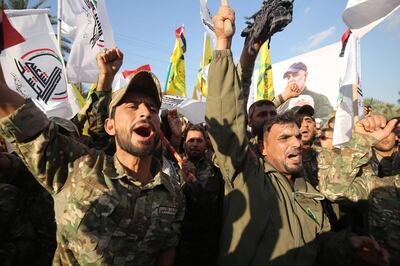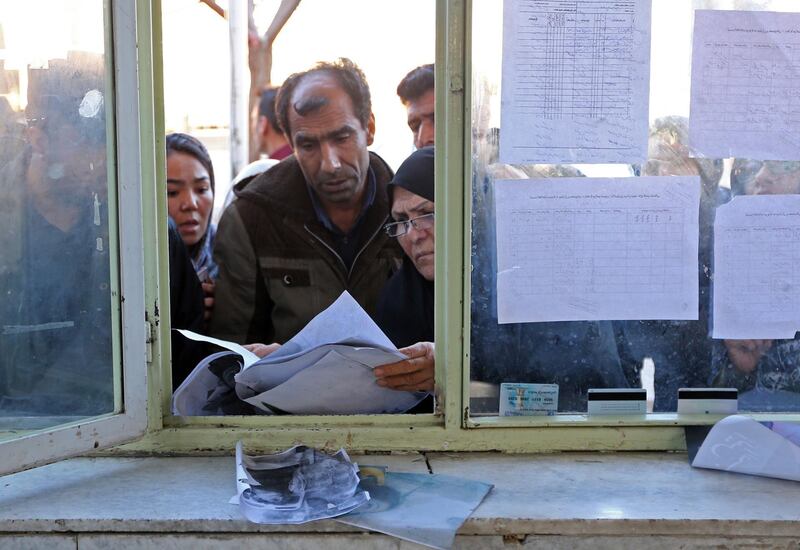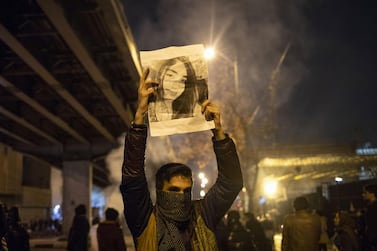Even in death, Qassem Suleimani has worked to undermine Iraq’s mass uprisings that were bludgeoned by his clerical bosses and the sectarian militias he oversaw.
Hours after Suleimani was buried in his hometown of Kerman on Tuesday, masked members of an Iraqi Shiite militia he oversaw opened fire on demonstrators in the impoverished city of Nasiriyah. They overran the protest camp in the southern Iraqi city as they continue an attempted crackdown on the three-month mass uprising.
Since early October, thousands have taken to the streets of Iraq to demand the resignation of the entire political class, and a new, non-sectarian administration to end corruption, provide public services and jobs.
In Nasiriyah, a major hub of Iraq’s protest movement, the militiamen burnt tents the demonstrators had set up in the centre of the Shiite majority city. At least five protestors were reportedly wounded in Tuesday night’s violence.
Since the uprising began in October, security forces and Shiite militias have killed over 500 and wounded thousands. Dozens have been abducted by masked men, threatened, tortured and some killed.
The man who orchestrated, or at least prodded, much of the violence was Suleimani.
The 62 year old head of Iran’s Quds forces regarded the uprisings in the Levant as a grave threat to the regime in Tehran. The man who has spent decades methodically building Tehran’s regional influence and web of proxies then set about crushing protests against its interests.
Barely a day after the Iraqi uprising in early October, Suleimani flew to Baghdad and surprised a meeting of Iraqi security officials, instructing them to deal with the protest movement with an iron fist. In the week after, the authorities and militias supported by Iran killed 150 protesters, with snipers deployed to shoot unarmed civilians.
Despite reeling from the death of the Quds leader, Iran’s rulers remain focused on psychological warfare to undermine the protest movement’s campaign. Iraqi politicians came out more flatly against the uprising, emulating rhetoric emanating from Tehran that the main problem of the country was the US presence. Many demonstrators left the streets in fear of more violence leaving just the core protesters.
Iran has also organised a seemingly endless series of funeral marches across Iraq and Iran for Suleimani and similar fanfare for his main Iraqi militia sidekick, Abu Mahdi Al Muhandis, who was killed alongside him.
Suleimani’s funeral processions began in Baghdad on Sunday, then moved to the Shiite holy cities of Najaf and Karbala, where Iraqi demonstrators had torched or attempted to burn down Iranian consulates several times in the past two months.
The funerals prompted pro-Iranian militia to resurface with renewed fervour on Iraq’s streets, all but halting the protests that had increasingly turned against Iranian tutelage.
After passing through Ahvaz and a main ceremony in Tehran, Suleimani’s coffin reached Kerman on Tuesday, where at least 56 people died in a stampede at the burial.

Sheikh Ali Al Uboudi, an independent Shiite cleric who backs the protest movement, told his followers that the attack in Nasiriyah this week was not “mere reaction” to Suleimani’s killing but the start of new and “expansive plan to put down the uprising by force.”
His killing came weeks after Iran killed hundreds as it suppressed domestic demonstrations over fuel prices, which supreme leader Ali Khamenei reportedly ordered to be ended at any cost. When he met Iraqi security officials in October, Suleimani reminded them of Iran’s proficiency in crushing dissent, suggesting they emulate the tactics.
In Lebanon, Hezbollah, a major opponent of the uprising there, organised its own rallies to mourn Suleimani, side-lining the country’s protest movement further.
Demonstrators had been attacked by Hezbollah supporters, as well as by the army. But a few killings were recorded in Lebanon and violence by authorities has been relatively limited.
While Hezbollah, as the most disciplined and experienced militia ally of Iran, may be able to stay the course without Suleimani’s direction, the situation is less clear in Iraq and Syria.
The militias Suleimani kept in-line in Syria and Iraq may feel more the impact of his disappearance from the scene.
But the violence they practice against civilians is unlikely to subside in his absence.







